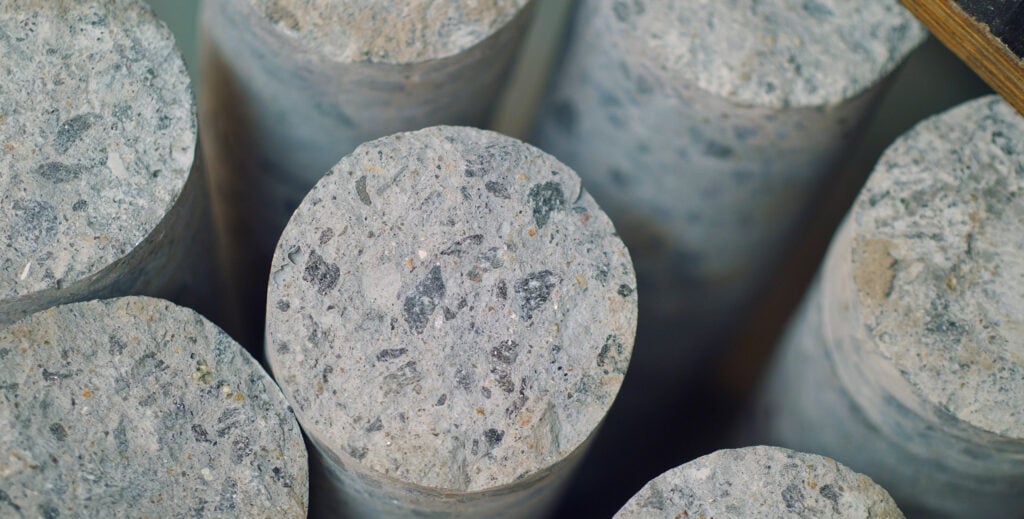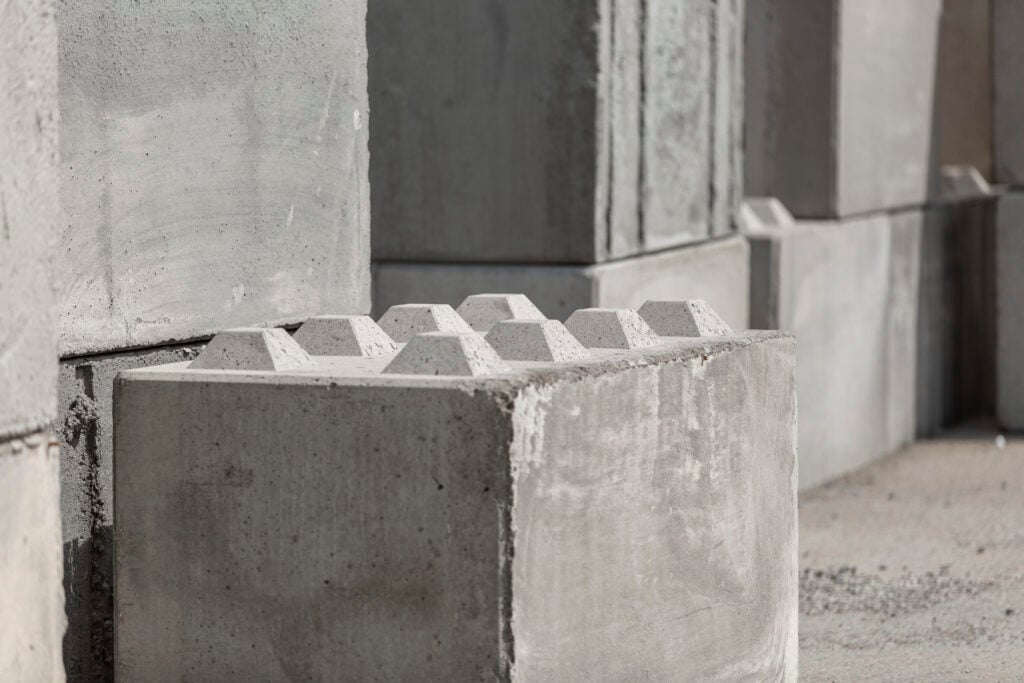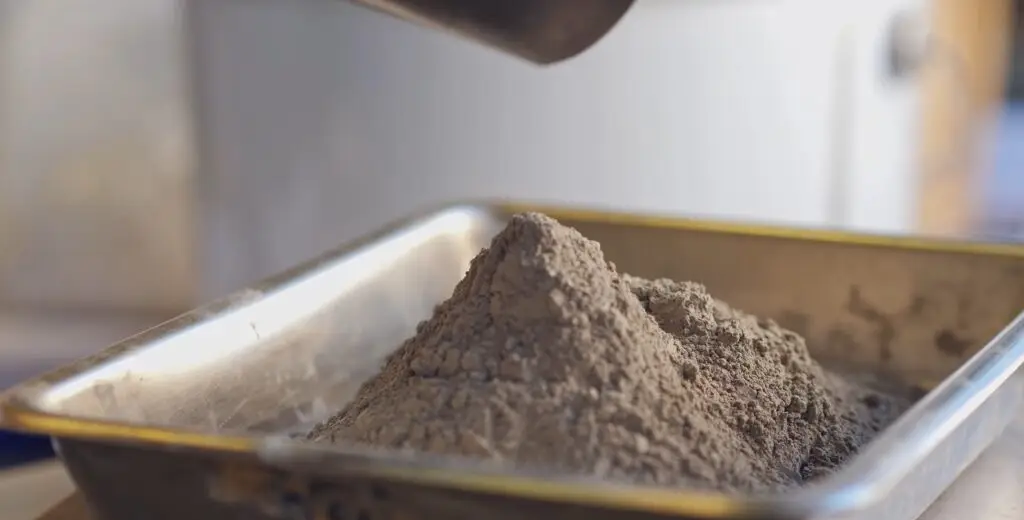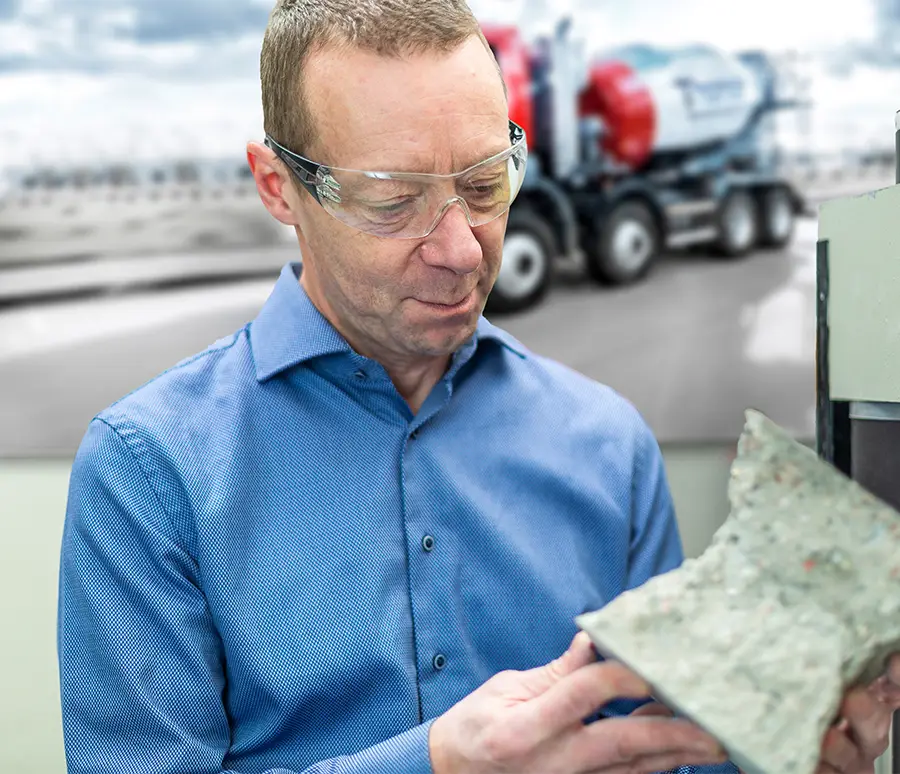Alternative binders – Can iron silicate replace cement?
The biggest challenge in the concrete industry is reducing the environmental impact of cement. Cement production accounts for a significant share of global CO₂ emissions, making the search for alternative binders a top priority.
At Thomas Concrete Group, we are currently investigating the potential of iron silicate from Boliden—an artificial pozzolan from cupper production —to understand its performance in concrete and to investigate how much of the cement it can replace. Iron silicate is primarily composed of iron oxide and silicon dioxide, and by studying different cements and replacement levels as well as various admixtures, we explore the potential to increase the reactivity.
Presently, there is no standard allowing the use this type of artificial pozzolans in concrete, but discussions in standardization are ongoing both in Sweden and on a European level. Ingemar Löfgren, Head of Research & Development at Thomas Concrete Group, is actively involved in a European initiative to develop a new performance-based standard for alternative binders. While this process will take time, it is crucial for enabling the widespread use of alternative binders in future concrete solutions. In the meantime, a Swedish standard is under development.

New methods for evaluating concrete properties
Beyond developing new materials, we are also researching improved ways to measure and understand concrete properties. In collaboration with Chalmers University of Technology, we are investigating embedded sensor systems that can continuously monitor concrete’s electrical conductivity development (indirectly porosity) and how this can be correlated to strength—without damaging the material. This is a non-destructive testing method that could provide valuable real-time data.
Another important research area focuses on developing methods to measure heat development. Heat development (Joule per gram binder) is a key indicator of material reactivity—the more heat generated, the stronger the concrete becomes. There is a clear correlation between heat development and strength, particularly during the first seven days, when 70–80 percent of the cement hydration has occurred. By studying these relationships and combined with electrical conductivity development, we can optimize concrete mixtures to reduce environmental impact while maintaining high performance.
Accelerating the transition to a more climate-neutral industry
Through our research, we aim not only to understand and develop new materials and methods but also to actively contribute to accelerating the transition toward a more climate-neutral concrete industry by providing engineered concrete. To drive innovation forward, we currently collaborate with two PhD students at Chalmers University of Technology, where Ingemar Löfgren also serves as a co-supervisor in both research projects.
These research studies are funded by the Family Thomas Foundation, which enables in-depth research and development in this field. By fostering collaboration between academia, industry, and research institutes, we can find the best solutions for the future of concrete—and we are committed to being a part of this transformation.



